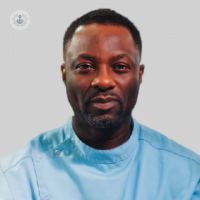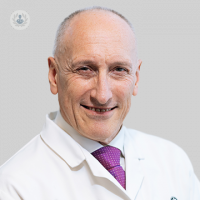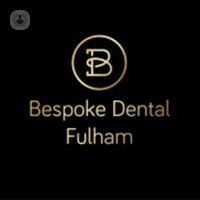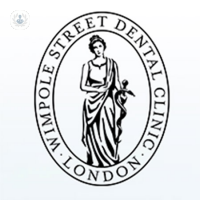What is tooth restoration and what is it for?
Tooth restoration consists of replacing or repairing teeth, bone or tissue.
Tooth restoration is indicated for problems with damaged or worn teeth and for treating TMJ disorder (a condition of the jaw joint that causes head and neck pain and sometimes a popping sound when chewing).

What kind of tooth restoration techniques are there?
In cases where tooth deterioration is severe, a complete oral reconstruction may be carried out by combining aesthetic and neuromuscular dentistry techniques.
In addition, orthodontics can be used to correct defects in tooth alignment and for subsequent dental restoration using porcelain veneers, composite veneers, dental crowns, bridges, implants and inlays.
Post-treatment care
It is normal to feel some pain or discomfort after tooth restoration. The specialist may prescribe painkillers and anti-inflammatories to help reduce swelling. You will also feel the effects of the anaesthetic for a few hours afterwards. However, swelling usually subsides within a day or two.
The specialist may suggest following a liquid diet for a week or two, to avoid putting pressure on the new tooth until the body has fully accepted it and its survival is guaranteed. They may also recommend using a special mouth rinse for a while, to prevent bacteria and other germs in the mouth from penetrating the reconstructed tooth. The specialist will tell you which rinse to use and for how long.
Lastly, you should visit your dentist regularly to have them evaluate the recovery process. These routine check-ups are important, since the tooth restoration may cause problems if something that needs to be corrected is left uncorrected.
11-13-2012 04-28-2023Tooth restoration
Mr Peyman Alam - Oral & maxillofacial surgery
Created on: 11-13-2012
Updated on: 04-28-2023
Edited by: Aoife Maguire
What is tooth restoration and what is it for?
Tooth restoration consists of replacing or repairing teeth, bone or tissue.
Tooth restoration is indicated for problems with damaged or worn teeth and for treating TMJ disorder (a condition of the jaw joint that causes head and neck pain and sometimes a popping sound when chewing).

What kind of tooth restoration techniques are there?
In cases where tooth deterioration is severe, a complete oral reconstruction may be carried out by combining aesthetic and neuromuscular dentistry techniques.
In addition, orthodontics can be used to correct defects in tooth alignment and for subsequent dental restoration using porcelain veneers, composite veneers, dental crowns, bridges, implants and inlays.
Post-treatment care
It is normal to feel some pain or discomfort after tooth restoration. The specialist may prescribe painkillers and anti-inflammatories to help reduce swelling. You will also feel the effects of the anaesthetic for a few hours afterwards. However, swelling usually subsides within a day or two.
The specialist may suggest following a liquid diet for a week or two, to avoid putting pressure on the new tooth until the body has fully accepted it and its survival is guaranteed. They may also recommend using a special mouth rinse for a while, to prevent bacteria and other germs in the mouth from penetrating the reconstructed tooth. The specialist will tell you which rinse to use and for how long.
Lastly, you should visit your dentist regularly to have them evaluate the recovery process. These routine check-ups are important, since the tooth restoration may cause problems if something that needs to be corrected is left uncorrected.


The dos and don’ts following a tooth extraction
By Dr Moira Wong
2024-12-26
Though aftercare may differ depending on the type of procedure, there are some general things you should and shouldn't do after having a tooth removed which will either help or delay your recovery. Dr Moira Wong, a leading orthodontist based in London with extensive experience in dentistry, offers some dental dos and don’ts following tooth extraction. See more
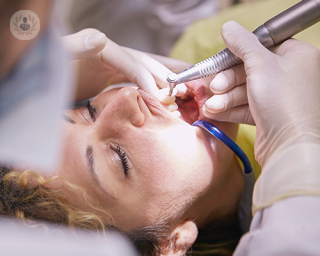

Tooth restoration: An expert insight
By Dr Olurotimi Adesanya MBE
2024-12-26
Tooth restoration is the process of repairing or replacing a damaged or missing tooth, aiming to restore its function, aesthetics, and overall oral health. Here, Dr Olurotimi Adesanya MBE, renowned dentist, offers his expert insight into tooth restoration. See more


Can snacking lead to dental erosion?
By Dr Raul Costa
2024-12-25
How can frequent snacking be harmful to our teeth? Mr Raul Costa, a restorative dentist from London explains how snacking on certain foods throughout the day can cause irreversible damage and what lifestyle changes you should make to protect your teeth. See more


The ABC approach: a minimally invasive alternative to achieve a radiant smile
By Dr Biju Krishnan
2024-12-25
The ABC approach is a progressive strategy to smile design allowing you to undergo a minimally invasive treatment plan to achieve your desired smile. Dr Biju Krishnan, an award-winning cosmetic dentist from London explains how he treated one of previous patients using this effective alternative without taking an invasive restorative approach. See more
Experts in Tooth restoration
-
Dr Raul Costa
DentistryExpert in:
- Composite veneers
- Cosmetic dentistry (aesthetic dentistry)
- Smile design
- Tooth restoration
- Veneers
- Dental implants
-
Dr Olurotimi Adesanya MBE
DentistryExpert in:
- Oral surgery
- Orthodontics
- Dental implants
- Cosmetic dentistry (aesthetic dentistry)
- Tooth restoration
- Digital dentistry
-
Dr Antimos Ouzounoglou
DentistryExpert in:
- Complex restorative dentistry
- Tooth restoration
- Cosmetic dentistry (aesthetic dentistry)
- Dental phobia
- Composite veneers
-
Dr Paul Wilson
DentistryExpert in:
- Dental implants
- Tooth restoration
- Invisalign
- Oral surgery
- Cosmetic dentistry (aesthetic dentistry)
- Smile design
-
Dr Sandra Garcia Martin
DentistryExpert in:
- Smile design
- Veneers
- Cosmetic dentistry (aesthetic dentistry)
- Teeth whitening
- Tooth restoration
- Tooth decay
- See all

Harley Street Dental Studio
Harley Street Dental Studio
52 Harley Street, Marylebone. W1G 9PY
No existe teléfono en el centro.
By using the telephone number provided by TOP DOCTORS, you automatically agree to let us use your phone number for statistical and commercial purposes. For further information, read our Privacy Policy
Top Doctors

Bespoke Dental Fulham
Bespoke Dental Fulham
Ground Floor, 275 New Kings Rd, London
No existe teléfono en el centro.
By using the telephone number provided by TOP DOCTORS, you automatically agree to let us use your phone number for statistical and commercial purposes. For further information, read our Privacy Policy
Top Doctors

Wimpole Street Dental Clinic
Wimpole Street Dental Clinic
38, Queen Anne Street, W1G 8HZ
No existe teléfono en el centro.
By using the telephone number provided by TOP DOCTORS, you automatically agree to let us use your phone number for statistical and commercial purposes. For further information, read our Privacy Policy
Top Doctors
-
Harley Street Dental Studio
52 Harley Street, Marylebone. W1G 9PY, W1G Marylebone LondonExpert in:
- Porcelain veneers
- Crowns
- Fillings
- Endodontics
- Cosmetic dentistry
- Dental implants
-
Bespoke Dental Fulham
Ground Floor, 275 New Kings Rd, London, West LondonExpert in:
- Composite bonding
- Cosmetic dentistry
- Dental implants
- Complex restorative dentistry
- Invisible braces
- Periodontics (gum problems)
-
Wimpole Street Dental Clinic
38, Queen Anne Street, W1G 8HZ, Central LondonExpert in:
- Oral surgery
- Periodontal surgery
- Cosmetic dentistry
- Tooth restoration
- Root canal treatment
- See all
- Most viewed diseases, medical tests, and treatments
- Snoring
- Chronic headache
- Facial feminisation surgery
- Head and neck cancer
- Neck lump
- Botulinum toxin (Botox™)
- Platelet-rich plasma
- Sialendoscopy
- Cleft palate
- Tooth wear


